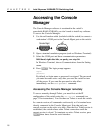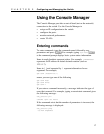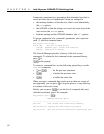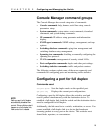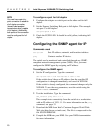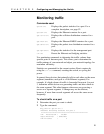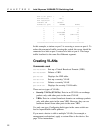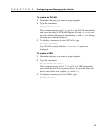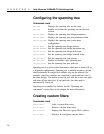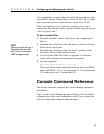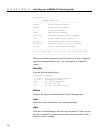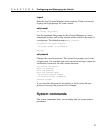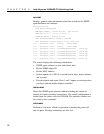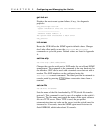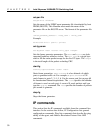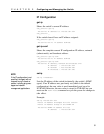
24
CHAPTER 2
Intel Express 100BASE-TX Switching Hub
Configuring the spanning tree
Commands used
get-stp Displays the spanning tree session state.
set-stp Enables or disables the spanning tree for the next
session.
get-st-bcfg Displays the spanning tree bridge parameters.
get-st-pcfg Displays the spanning tree port parameters table.
get-st-syscfg Displays the spanning tree system ports
configuration.
set-br-prio Sets the spanning tree bridge priority.
set-br-maxage Sets the spanning tree bridge maximum age.
set-br-hellot Sets the spanning tree bridge hello time.
set-br-fwdel Sets the spanning tree bridge forward delay.
set-prt-prio Sets the spanning tree port priority.
set-prt-enb Enables or disables a port spanning tree.
set-prt-pcost Sets the spanning tree port path cost.
Spanning tree is a protocol that determines which port is turned off in
a redundant configuration. Spanning tree is enabled anytime a packet
could potentially be caught in an infinite loop on the network (for
example, when two switches are connected to each other and also to
the same bridge). The protocol uses the port with the lowest-cost path
and turns off the other port. If one path fails, the other path is
automatically turned on.
Spanning tree is enabled by default. See the “Spanning tree
commands” section later in this chapter for more information.
Creating custom filters
Commands used
add-cf-entry
Adds a custom filter entry.
del-cf-entry
Deletes a custom filter entry.
get-lt-filter
Displays the filter for a given MAC address.
get-nv-cftbl
Displays all configured custom filters.



